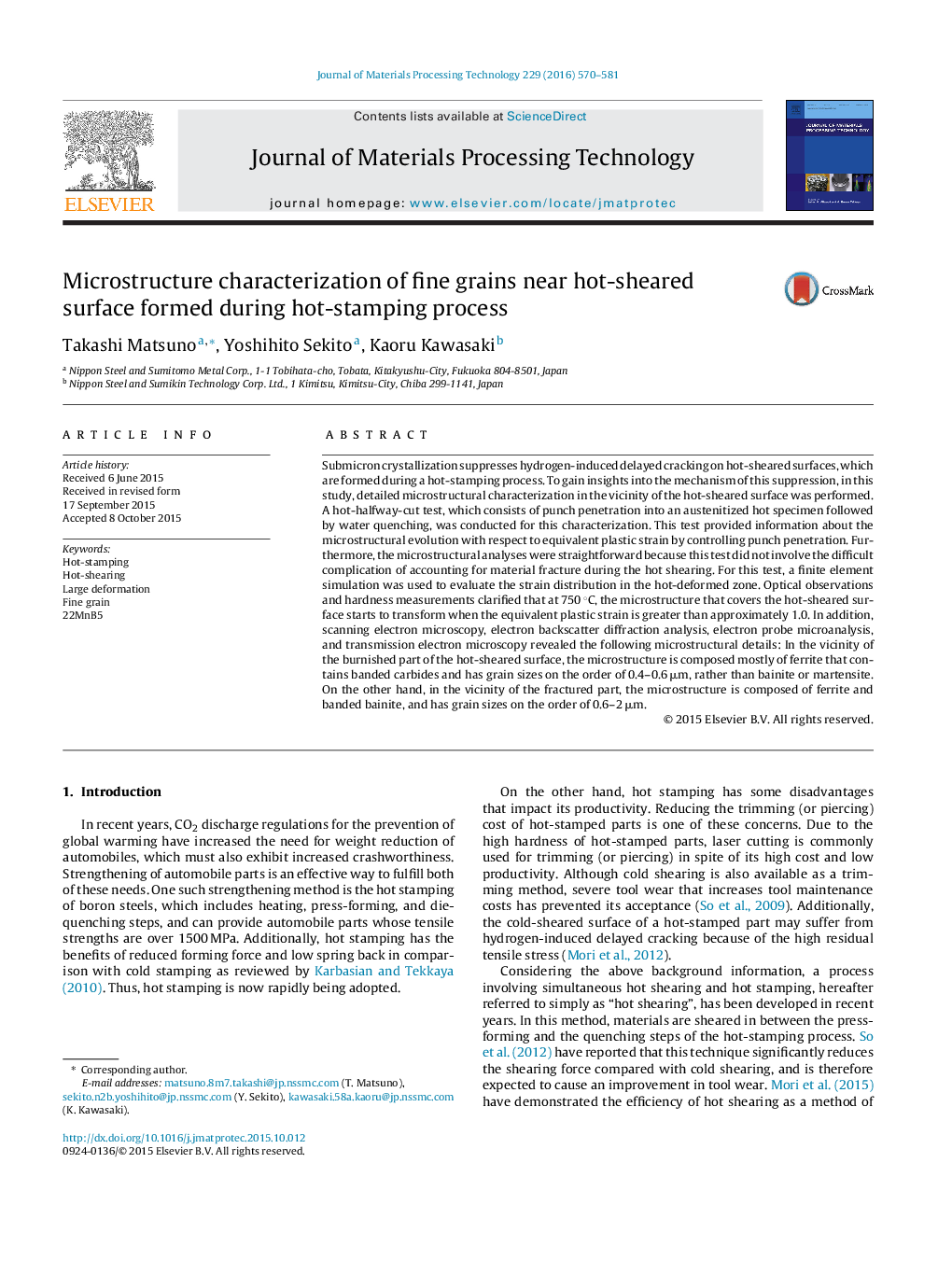| Article ID | Journal | Published Year | Pages | File Type |
|---|---|---|---|---|
| 7176864 | Journal of Materials Processing Technology | 2016 | 12 Pages |
Abstract
Submicron crystallization suppresses hydrogen-induced delayed cracking on hot-sheared surfaces, which are formed during a hot-stamping process. To gain insights into the mechanism of this suppression, in this study, detailed microstructural characterization in the vicinity of the hot-sheared surface was performed. A hot-halfway-cut test, which consists of punch penetration into an austenitized hot specimen followed by water quenching, was conducted for this characterization. This test provided information about the microstructural evolution with respect to equivalent plastic strain by controlling punch penetration. Furthermore, the microstructural analyses were straightforward because this test did not involve the difficult complication of accounting for material fracture during the hot shearing. For this test, a finite element simulation was used to evaluate the strain distribution in the hot-deformed zone. Optical observations and hardness measurements clarified that at 750 °C, the microstructure that covers the hot-sheared surface starts to transform when the equivalent plastic strain is greater than approximately 1.0. In addition, scanning electron microscopy, electron backscatter diffraction analysis, electron probe microanalysis, and transmission electron microscopy revealed the following microstructural details: In the vicinity of the burnished part of the hot-sheared surface, the microstructure is composed mostly of ferrite that contains banded carbides and has grain sizes on the order of 0.4-0.6 μm, rather than bainite or martensite. On the other hand, in the vicinity of the fractured part, the microstructure is composed of ferrite and banded bainite, and has grain sizes on the order of 0.6-2 μm.
Keywords
Related Topics
Physical Sciences and Engineering
Engineering
Industrial and Manufacturing Engineering
Authors
Takashi Matsuno, Yoshihito Sekito, Kaoru Kawasaki,
